As I made my way back down the steep path to my Trinity spot, I couldn’t help but notice two things: Where did all this space come from, and where is the trusty bridge that ran over the small stream? The bridge, in fact, has been consumed by the stream as well as some very sturdy, icy slush. It is still under there somewhere and I hope to see it again before I leave for the summer. Beside the large ice patch, the stream has been covered by a foot of powder (which clearly indicates the passage of some small creatures).
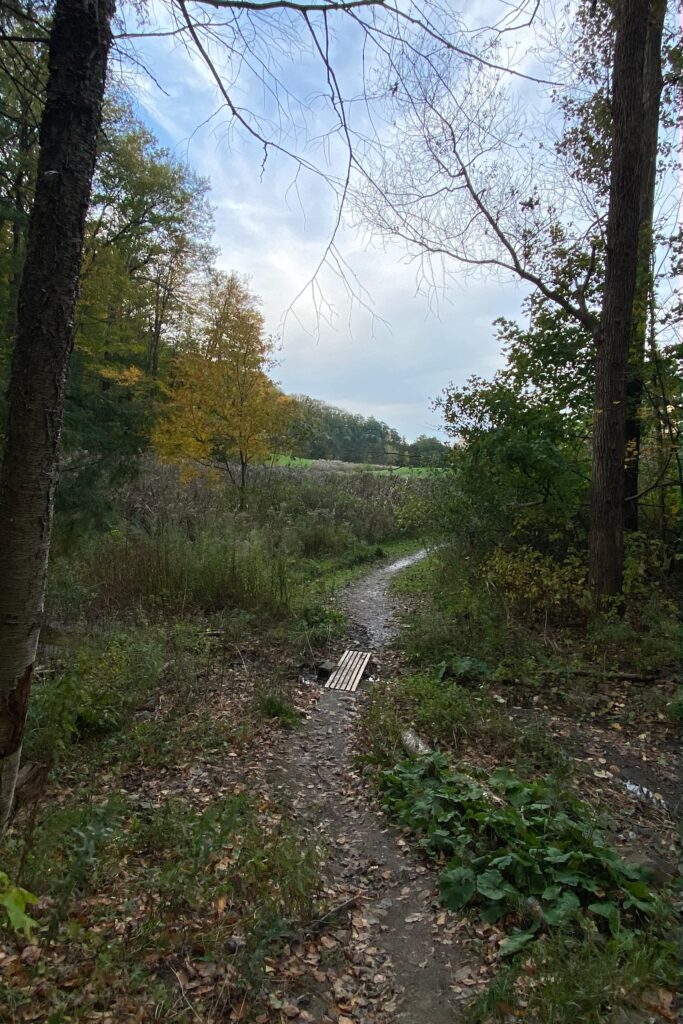
October 27, 2021 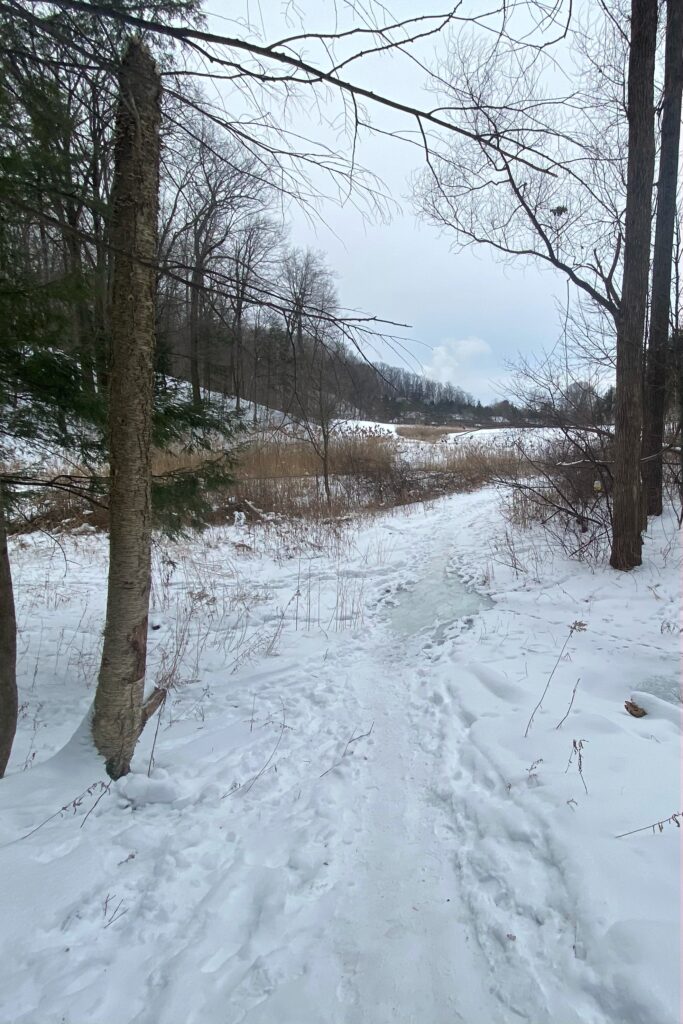
January 24, 2022
Most of the short shrubbery along the bottom of the hill has reduced in size and appears shriveled and dim. Along the fence, the common reeds remain tall and in abundance along the fence. Before I left, the plants seemed to be much fuller and tall. Now, the mountain is much more sparse – I can perfectly see the mountain behind the shrubbery now. The coniferous trees and their pines have grown thick and coated, still hanging on despite below freezing temperatures.
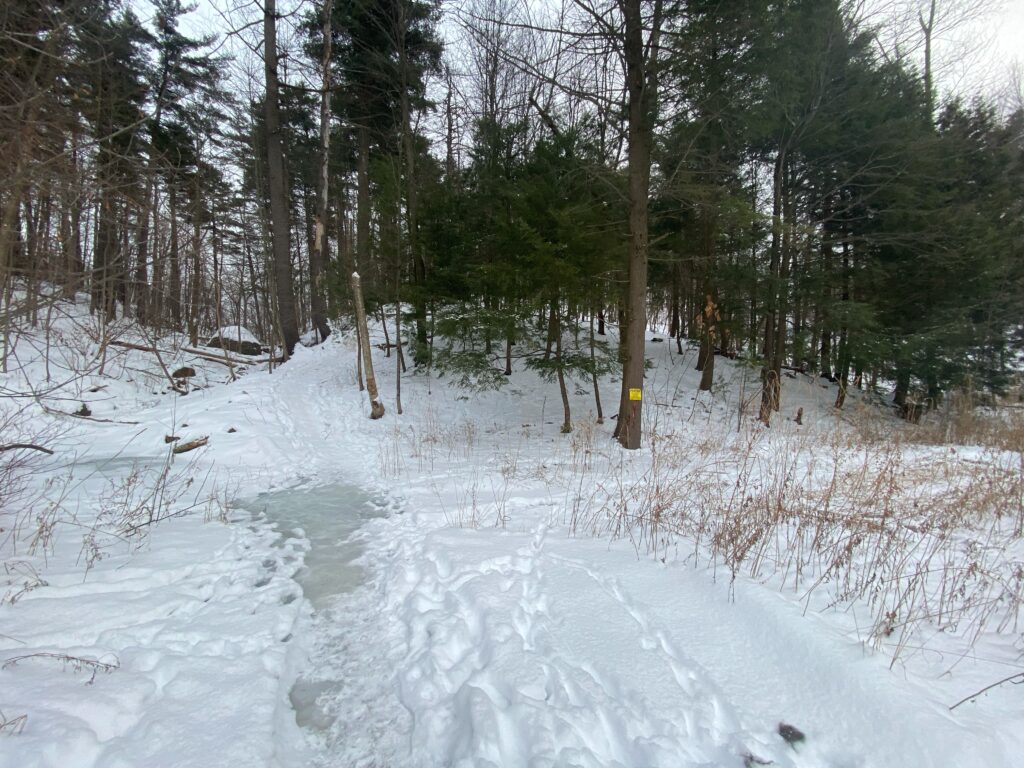
The last time I visited the spot behind Trinity, I saw little to no animal tracks. To my surprise, I was overwhelmed by the amount of tracks I saw this time, which is likely due to the snow being much more powdery than before break. My coolest discovery would be the eastern grey squirrel tracks alongside one of the Eastern Hemlocks. These tracks are incredibly concentrated and of different sizes — which leads to me to wonder if a mother is being accompanied by her babies. Several other tracks I noticed were possibly Ermine and White-Tailed Deer, which are shown below.
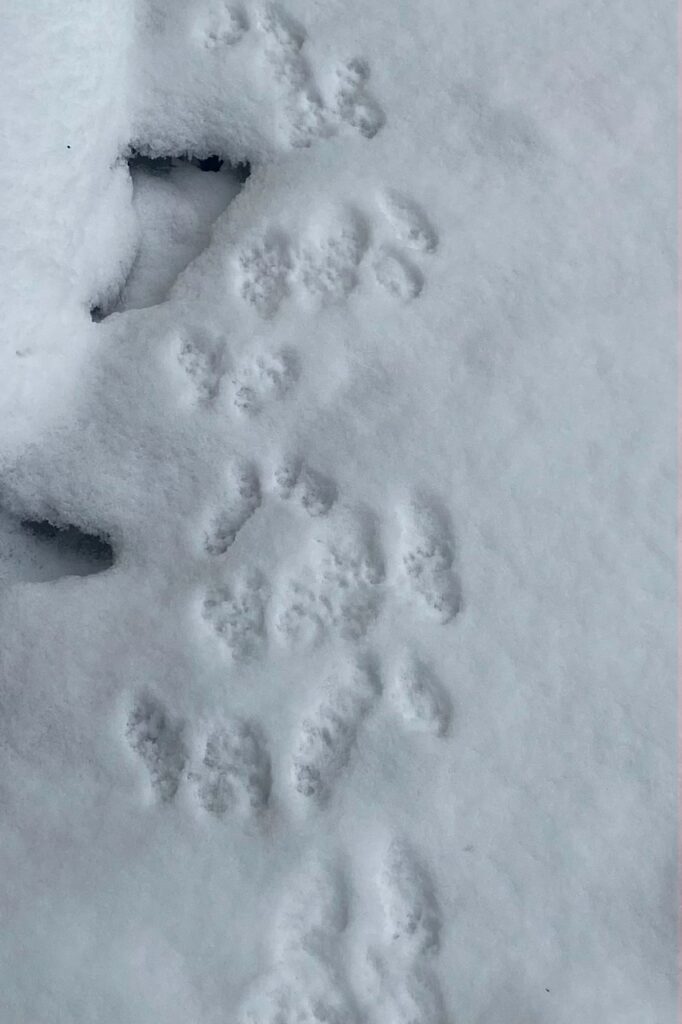
Eastern Grey Squirrel 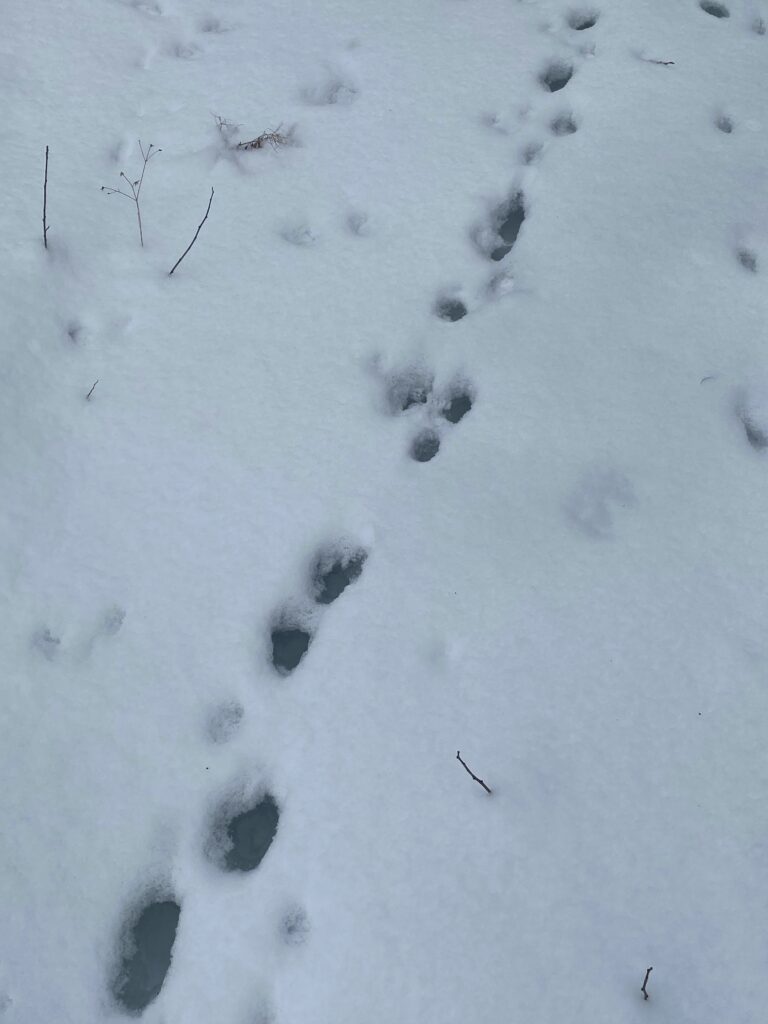
Ermine 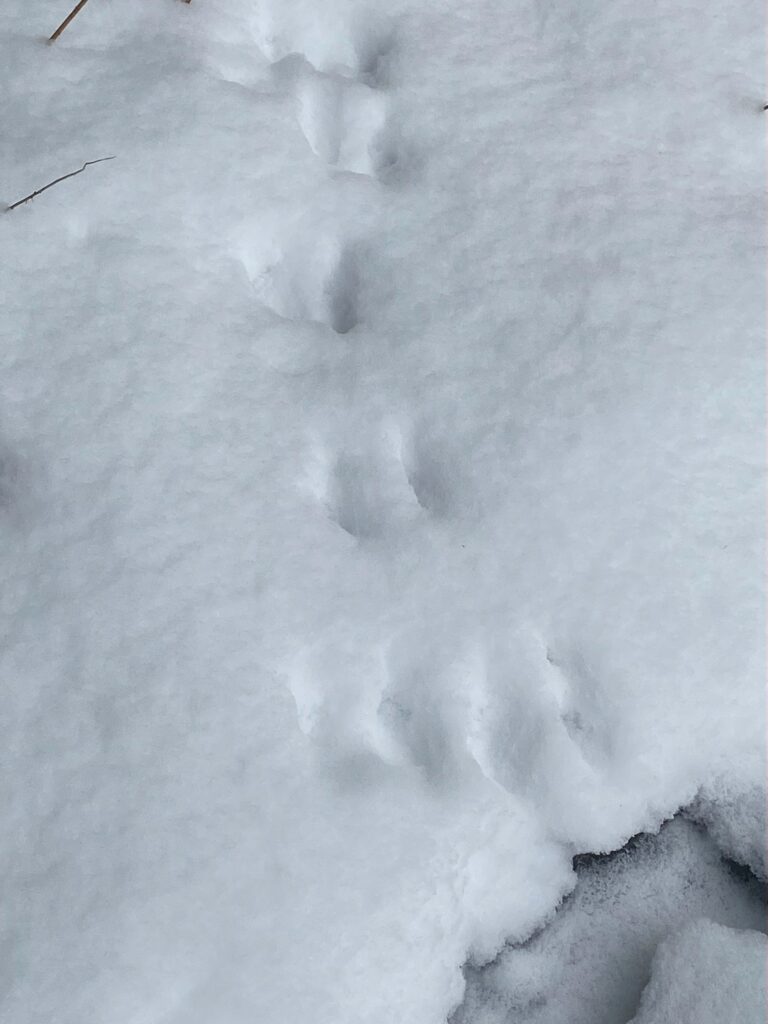
White-Tailed Deer
I noticed several other tracks as well, most of which I’ve been having trouble identifying. I believe one belongs to a mountain lion, another to a red fox and lastly, to hare. I’m hoping to sharpen up on my track identifying in the next coming weeks. See ya!